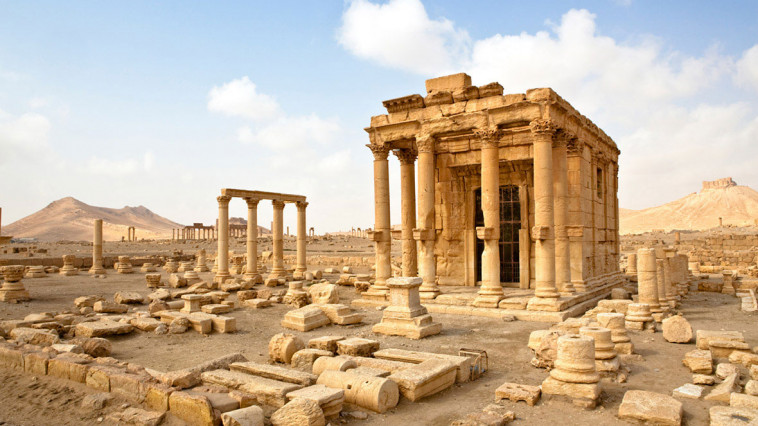ISIS Destroyed an Ancient Roman Monument in Syria’s Historic Palmyra

ISIS militants destroyed a landmark ancient Roman monument and parts of the theater in Syria’s historic town of Palmyra, the government and opposition monitoring groups said Friday.
Maamoun Abdulkarim, the head of Syria’s antiquities department, said the militants destroyed the facade of the second-century theater along with the Tetrapylon, a cubic-shaped ancient Roman monument that sits in the middle of the colonnade road that leads to the theater.
Abdulkarim told The Associated Press that reports of the destruction first trickled out of the ISIS-held town late in December. But satellite images of the damage were only available late Thursday, confirming the destruction.
The imagery, provided by the US-based American Schools of Oriental Research, show significant damage to the Tetrapylon and the theater. The ASOR said the damage is likely caused by intentional destruction from ISIS but they were unable to verify the exact cause.
Abdulkarim said only two of the 16 columns of the Tetrapylon remain standing. The stage backdrop has sustained damage, according to ASOR.
State-run news agency SANA reported the damage Friday and Syrian opposition monitors also confirmed but gave no immediate details.
The extremists recaptured the ancient town in December from government troops — nine months after IS was expelled in a Russia-backed offensive. During their first stay, from May 2015 until May 2016, IS destroyed ancient temples including the Temple of Bel, which dated back to A.D. 32, and the Temple of Baalshamin, a structure of stone blocks several stories high fronted by six towering columns.
The militants also blew up the Arch of Triumph, which had been built under Roman emperor Septimius Severus between A.D. 193 and A.D. 211.
A UNESCO world heritage site, Palmyra boasts 2,000-year-old towering Roman-era colonnades and priceless artifacts. Syrians affectionately refer to it as the “Bride of the Desert.”
The extremists have destroyed ancient sites across their self-styled Islamic caliphate in Syria and Iraq, viewing them as monuments to idolatry.
A desert oasis surrounded by palm trees in central Syria, Palmyra is also a strategic crossroads linking the Syrian capital, Damascus, with the country’s east and neighboring Iraq. Located 155 miles (215 kilometers) east of Damascus, the city was once home to 65,000 people before the Syrian civil war began. However, most Palmyra residents did not return after it was retaken by the government. Activists estimated the city is now home to a few hundred families.
Many of them tried to flee as IS recaptured the city in December.
On Thursday, reports emerged the militant group killed 12 captives it held in Palmyra, some of them beheaded in the Roman theater.
Source: TIME














